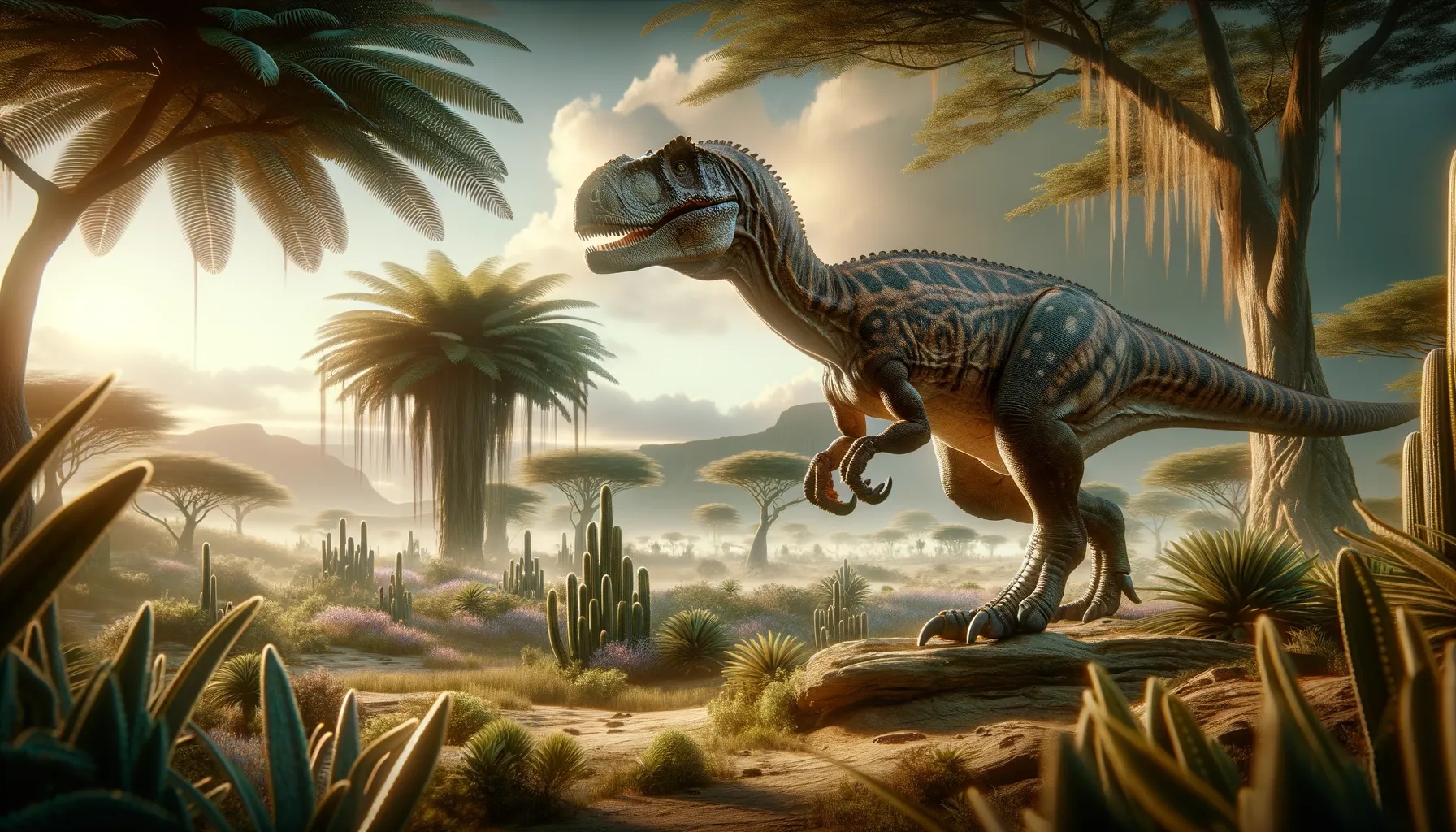
Eocursor
A swift forerunner of the dinosaur world.
Period
Triassic
Length
Roughly 1 meter in length.
Height
Approximately 50 centimeters tall.
Weight
Around 10 to 20 kilograms.
Eocursor, a small and agile dinosaur from the late Triassic, represents an early member of the Ornithischia group. Known for its lightweight build and bipedal locomotion, it is pivotal in understanding the evolution of early dinosaurs. Its discovery in South Africa provides important insights into the diversity of Triassic fauna. Eocursor's anatomical features suggest an omnivorous diet, setting it apart from many later herbivorous relatives. As one of the earliest known ornithischians, it holds a unique place in the dinosaur family tree.
Diet
Eocursor likely had an omnivorous diet. It could have consumed plants, small insects, and other available resources. Its teeth suggest a capability for processing a variety of foods.
Hunting
There is limited evidence of active hunting, but it may have foraged or opportunistically hunted small prey. Its agility suggests it could flee from predators quickly.
Environmental challenges
During the late Triassic, Eocursor faced environmental challenges such as varying climates and competition for resources. Predator threats were another challenge, necessitating vigilance and agility. Surviving in a dynamic ecosystem required adaptability to changing conditions of flora and fauna.
Speed
Eocursor was a relatively swift dinosaur for its size.
Lifespan
Estimated to have lived around 20-30 years.
First discovery
Discovered in 1993 in South Africa.
Fun Facts
- Eocursor was one of the earliest known dinosaurs, living approximately 210 million years ago during the Late Triassic period.
- The name 'Eocursor' means 'dawn runner,' reflecting its status as an early, speedy dinosaur.
- Eocursor was a small, bipedal dinosaur, likely standing around knee-high to a human and was about the length of a house cat.
- This dinosaur is believed to have been an herbivore, meaning it likely fed on plants that grew during its time.
- Fossils of Eocursor have been found in South Africa, providing valuable insights into early dinosaur evolution.
- Eocursor's long hind limbs suggest it was capable of quick running, possibly to escape predators.
- The discovery of Eocursor helps scientists understand the transition from early dinosaur ancestors to more advanced ornithischians.
Growth and Development
Like many early dinosaurs, Eocursor likely grew rapidly in its juvenile stages to avoid predation. Bone studies suggest fast growth rates initially, slowing as it reached maturity. Development included gradual changes in limb proportions, enhancing its bipedal efficiency.
Habitat
Eocursor inhabited regions likely characterized by open spaces and scattered vegetation. Fossil evidence suggests it lived in what is now South Africa, which had a mix of river systems and floodplains. This environment would have supported a diverse range of life forms, offering ample food resources.
Interaction with other species
Eocursor likely coexisted with various other dinosaurs and small reptiles. Competition for resources among herbivores and omnivores was common. Predators in its environment would have posed significant threats, influencing social and foraging behaviors.
Natural lifespan
In its natural environment, Eocursor's lifespan was likely around 20-30 years.
Reproduction
Eocursor reproduced oviparously, laying eggs from which hatchlings emerged. Clutches may have been relatively small, reflecting the strategies of early dinosaurs. Parental care is uncertain, though some protection of nesting sites is possible.
Social behaviour
Eocursor may have exhibited social behaviors, potentially forming small groups for foraging. This gregarious behavior could offer protection against predators. Vocalizations and displays might have been part of communication within groups.
Fossil locations
Eocursor fossils were first discovered in the Free State Province of South Africa. The site suggests a diverse Jurassic-era ecosystem. Significant finds have contributed to understanding the early evolution of ornithischians in southern Gondwana.
